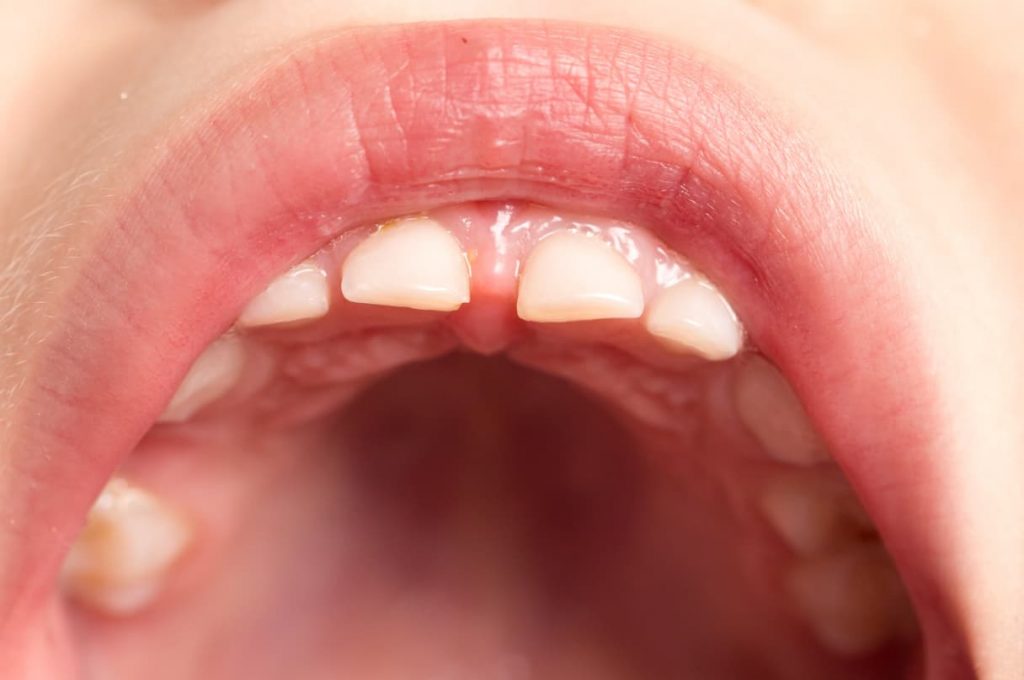Microdontia is a dental condition that results in very small teeth. Other than causing a cosmetic concern, it can also cause some functional problems, especially due to the gaps between the teeth. It’s possible for this condition to only affect one or a few of your teeth, but it can also be “generalised” to all the teeth.
Depending on the extent of your condition, there are different treatment options that can help drastically improve the overall appearance of your teeth. In this guide, you’ll learn more about microdontia itself and its causes along with ways in which it can be fixed.
What Is Microdontia?
Microdontia refers to the state of having teeth that are smaller than normal. As a result, it can even make a particular tooth (or teeth) appear peg-shaped. Other than that, it can cause diastema – gaps between teeth where food can get stuck – and malocclusion (improper alignment of teeth).

As per StatPearls, commonly, microdontia occurs in the lateral incisors of the upper jaw, and it’s more prevalent in women compared to men; the total occurrence rate is 1.5-2%. This condition was also classified into 3 types by Shafer, Hine, and Levy in their book A Textbook of Oral Pathology (1958). They are as follows:
- Localised (focal) microdontia – When a single tooth is affected.
- Relative generalised microdontia – When the teeth are small “relative” to a large jaw.
- True generalised microdontia – When all the teeth in the mouth (upper and lower jaw) are affected. It’s also very rare.
However, according to a 2011 study published in Head & Face Medicine, microdontia can be further classified based on the part of the tooth it’s impacting. It could be:
- Entire tooth
- Crown of the tooth (the part above the gum line, covered by enamel)
- Only the root of the tooth
It should also be noted that this condition isn’t only seen in adults. According to a 2022 study published in the Journal of Oral and Maxillofacial Pathology, it can occur in both primary (first) and permanent teeth, although it’s more common in the latter.
What Causes Microdontia?
Microdontia can be caused both by genetic and environmental factors. In any case, it’s the “developmental process” that’s negatively influenced, which can, in turn, cause abnormality in the formation of teeth, as reported by StatPearls.

Some health conditions associated with microdontia include:
- Fanconi anemia
- Down syndrome
- Axenfeld-Rieger syndrome
- Pituitary dwarfism
- Williams syndrome
- Ullrich-Turner syndrome
- Gorlin–Chaudhry–Moss syndrome
- Hallermann-Streiff
- Oral-facial-digital syndrome
- Chemotherapy
- Radiotherapy
While many syndromes are linked to microdontia, this condition can also develop without any medical history of them.
How To Fix Microdontia?
The treatment for microdontia will depend on how severe your condition is, so you must consult a dentist for an effective treatment plan.
It can include orthodontic treatment. Your dentist might place braces to close the gaps between your teeth. However, orthodontic treatment can also be combined with restorative dentistry for the best possible outcome. These can include:

Other than that, your dentist may also recommend taking a tooth out entirely if there’s an issue with space or the tooth doesn’t have a good chance of surviving well in the long run.
Conclusion
As the teeth are unusually small and can also cause functional problems, naturally so, people look for ways to fix their microdontia teeth. Fortunately, there are a number of ways in which this can be achieved.
But to be sure that you’re suffering from this issue, you must, first and foremost, get in touch with a board-certified dental professional for an accurate diagnosis and treatment plan.
Reviewed and approved by Dr Izbel Aksit
FAQ
Is microdontia hereditary?
Your genetics can influence the development of microdontia. However, it’s not always caused by hereditary factors. For instance, environmental factors like chemotherapy and radiotherapy can also make the teeth abnormally small.
Can braces fix microdontia?
Braces are orthodontic treatments, and orthodontic treatments, such as braces, may be used to close gaps in the teeth caused by microdontia.
